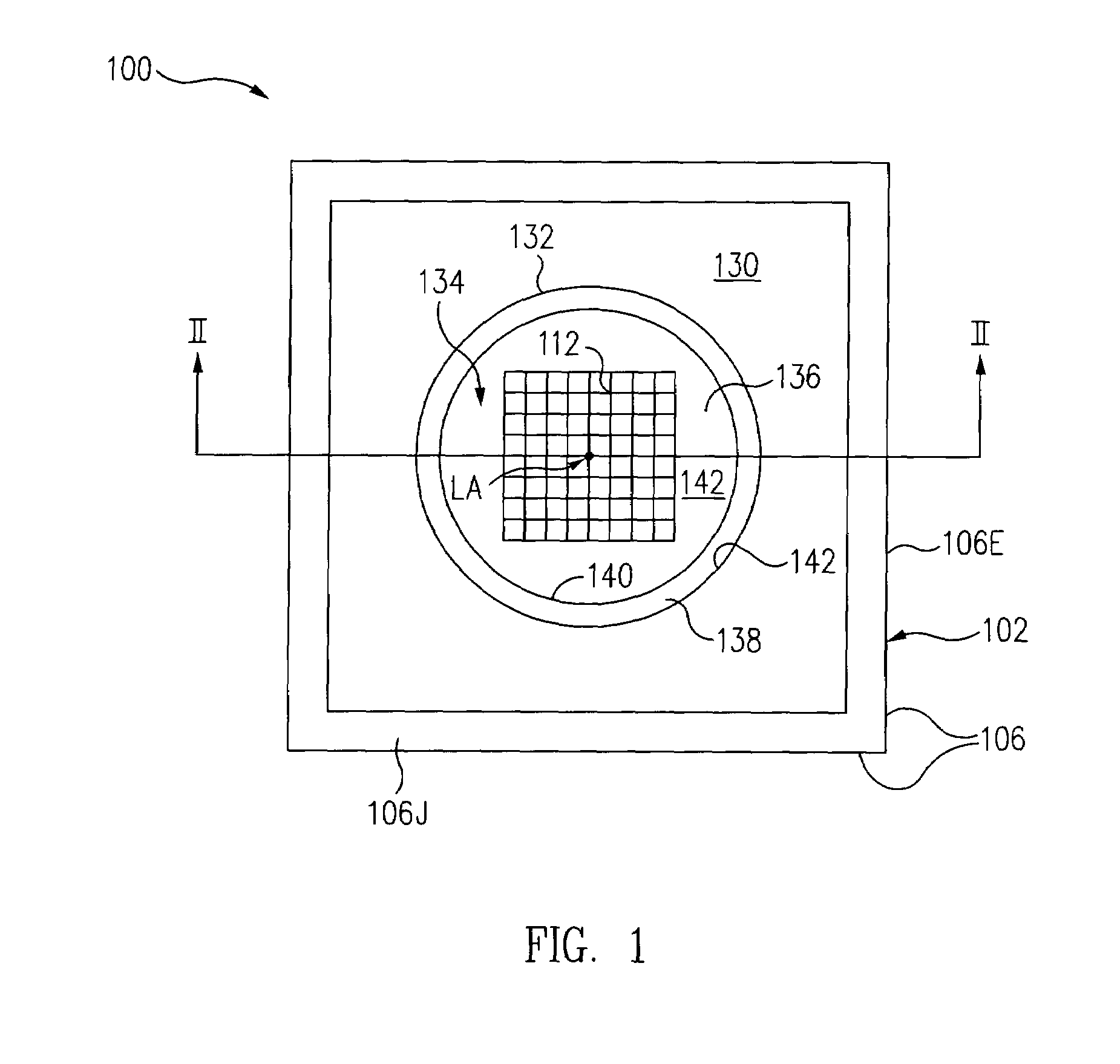Optical module with lens integral holder fabrication method
a technology of optical modules and integral holders, applied in the field of electronic components packaging, can solve the problems of large image sensor assembly and relatively large housing, and achieve the effects of minimizing the overall width enhancing the environmental protection and reliability of the optical module, and minimizing the cost associated
- Summary
- Abstract
- Description
- Claims
- Application Information
AI Technical Summary
Benefits of technology
Problems solved by technology
Method used
Image
Examples
Embodiment Construction
[0034]In accordance with the present invention, an optical module 100 (FIG. 2) includes a substrate 102 having a base 104 and a sidewall 106. Optical module 100 further includes an image sensor 108 mounted to base 104 and a lens housing 130 mounted to sidewall 106.
[0035]Sidewall 106 includes a joint surface 106J and lens housing 130 includes a mounting surface 156A. Mounting surface 156A of lens housing 130 is bonded to joint surface 106J of substrate 102 thus mounting lens housing 130 to sidewall 106.
[0036]To minimize the overall width of optical module 100, in one embodiment (FIG. 3B), mounting surface 156A of lens housing 130 is formed with a locking feature. The locking feature includes a horizontal surface 310 parallel to joint surface 106J of substrate 102 and a vertical surface 312 perpendicular to joint surface 106J and extending downwards from horizontal surface 310. Horizontal surface 310 is bonded to joint surface 106J and vertical surface 312 is bonded to an interior sur...
PUM
| Property | Measurement | Unit |
|---|---|---|
| Adhesivity | aaaaa | aaaaa |
| Area | aaaaa | aaaaa |
Abstract
Description
Claims
Application Information
 Login to View More
Login to View More - R&D
- Intellectual Property
- Life Sciences
- Materials
- Tech Scout
- Unparalleled Data Quality
- Higher Quality Content
- 60% Fewer Hallucinations
Browse by: Latest US Patents, China's latest patents, Technical Efficacy Thesaurus, Application Domain, Technology Topic, Popular Technical Reports.
© 2025 PatSnap. All rights reserved.Legal|Privacy policy|Modern Slavery Act Transparency Statement|Sitemap|About US| Contact US: help@patsnap.com



